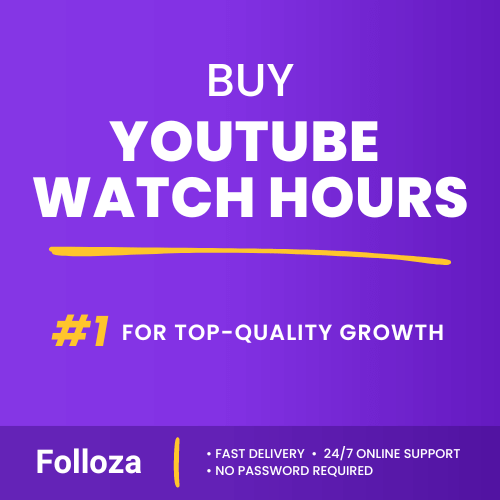Have you ever wondered how you can use movie clips in your YouTube videos without crossing the copyright line? It's a question that many content creators stumble upon when they wish to add a touch of cinematic flair to their projects. Don't worry, it's actually possible to do this legally, and I'm here to guide you through the maze of rules and guidelines.
Table of Contents
- Understanding Copyright Law
- Fair Use: Your Legal Shield
- Seeking Permission: The Golden Ticket
- Leveraging Public Domain and Creative Commons
- Editing and Transforming Clips
- Navigating YouTube's Content ID System
- Using Clips for Commentary, Critique, and Education
- Best Practices for Safe Usage
- Conclusion: Enjoying Creatively and Legally
Understanding Copyright Law
To start with, it's crucial to get a handle on what copyright is. Copyright is a legal framework that gives creators of original works exclusive rights to use and distribute their work. This means that when you see a movie, the creators own the rights to every part of it, from dialogue to visuals. This is why using someone else's work without permission can get you into trouble.
The Basics of Copyright
Copyright law is designed to protect the creative works of individuals or organizations, giving them control over how their work is used. This extends to movies, which are protected under these laws. Understanding these basics is the first step in figuring out how you can use movie clips without infringing on these rights.
What YouTube's Policies Say
YouTube has specific policies when it comes to using copyrighted content. Essentially, they want to ensure that all uploaded content respects copyright law. If you upload a video with copyrighted material (like movie clips), YouTube's algorithms may detect this and could take various actions, including blocking your video or issuing a copyright strike against your channel.
Fair Use: Your Legal Shield
One of your best tools for using movie clips is the concept of "Fair Use." This is a legal doctrine that allows limited use of copyrighted materials without permission from the rights holders. However, fair use is not a free-for-all and comes with its own set of criteria.
What Constitutes Fair Use?
Fair use is determined by several factors, including:
- Purpose and Character: Are you using the clip for educational purposes, criticism, commentary, or parody? These uses are more likely to be considered fair use.
- Amount and Substantiality: How much of the movie are you using? Using smaller, less significant parts is more likely to be fair.
- Effect on the Market: Are you using the clip in a way that affects the market for the original movie? If your use doesn't impact sales, fair use might apply.
- Nature of the Work: Factual works are more likely to be considered under fair use than fictional works.
Examples of Fair Use
- A film review that uses short clips to illustrate points.
- An educational video that analyzes scenes in the context of film studies.
- A parody video that creatively alters and critiques the original movie.
Seeking Permission: The Golden Ticket
Sometimes the most straightforward path is to seek permission from the rights holder. It may seem daunting, but many companies are open to allowing the use of their content under certain conditions.
How to Get Permission
- Identify the Rights Holder: This is usually the production studio, and their contact information can often be found on their official website.
- Explain Your Intentions: Be clear about how you plan to use the clip, being specific about its purpose and the platform of use.
- Negotiate Terms: Be prepared to possibly pay a fee or meet specific conditions for use. An official agreement can give you peace of mind and legality.
Advantages of Permission
By obtaining permission, you ensure that you won't face any legal issues or copyright claims. Plus, it might grant you access to higher quality clips and additional materials.

Boost channel authority.
- Fast delivery
- Consistent growth
- 90-day refill

Elevate video visibility.
- High retention
- Fast delivery
- Risk-free

Boost watch time.
- Steady hours
- Quick delivery
- Consistent boost
Leveraging Public Domain and Creative Commons
If you're aiming to avoid any legal intricacies, using movie clips that are in the public domain or licensed under Creative Commons can be an excellent route. These clips are free to use, provided you follow the terms set by the license.
Finding Public Domain Clips
Public domain works are those whose intellectual property rights have expired, been forfeited, or are inapplicable. Websites like the Prelinger Archives or the Internet Archive offer vast collections of public domain movies.
Understanding Creative Commons
Creative Commons licenses allow creators to give others permission to use their work under certain conditions. Websites like Vimeo or Wikimedia Commons provide Creative Commons-licensed materials which can be a treasure trove for content creators.
| License Type | Description |
|---|---|
| Attribution (CC BY) | Allows use, adaptation, and distribution with credit to the creator. |
| Non-Commercial (CC BY-NC) | Usage permitted as long as it's not for commercial purposes. |
| ShareAlike (CC BY-SA) | Derivatives must be shared with the same license as the original. |
| No Derivatives (CC BY-ND) | Use is allowed, but the work can't be modified. |
Editing and Transforming Clips
Besides understanding the legalities, how you edit and transform movie clips is crucial in ensuring they fall under fair use or are non-infringing. Editing alters the original content, making it distinctively different, and potentially more legally acceptable.
Tips for Transformative Use
- Add Commentary: Overlay your voice or text to provide analysis or critique.
- Alter Visuals: Change the color, speed, or aspect ratio.
- Combine with Other Elements: Integrate with your footage or other clips to create something new.
Navigating YouTube's Content ID System
When you upload a video to YouTube, it goes through Content ID, an automated system that scans videos for copyrighted content. Knowing how to handle this system can help you keep your content live and strike-free.
How Content ID Works
This system matches uploaded videos against a database of content provided by rights holders. If a match is found, YouTube might monetize the video on behalf of the owner, block it, or mute the audio.
Disputing a Content ID Claim
If you believe your use of a movie clip is covered under fair use, you can dispute a Content ID claim. YouTube allows you to provide an explanation as to why you believe your video doesn't infringe on copyright.
Using Clips for Commentary, Critique, and Education
If your intention is to provide commentary, criticism, or educational content, you might have a stronger case for fair use. These purposes are traditionally protected as they contribute to public knowledge and discourse.
Creating a Review or Analysis
When reviewing, always ensure that your own words and insights are at the forefront. Use clips sparingly and only to support your arguments.
Educational Uses
For educational content, explicitly reference how each clip fits into your lesson or discussion. Keep your audience in mind, aiming to educate rather than entertain.
Best Practices for Safe Usage
Following best practices can significantly reduce your risk of copyright infringement or issues with YouTube's policies. Here are some tips to keep you in the safe zone.
Keep Clips Short
The shorter the clip, the less likely it is to trigger a claim. Aim for brevity unless the content requires more for context.
Reference Original Source
Always credit the original work where appropriate, even if you believe your usage falls under fair use.
Stay Updated on Policies
Copyright laws and YouTube's policies can change, so staying informed will help you adjust your strategies as needed.
Conclusion: Enjoying Creatively and Legally
Creativity and legality can indeed coexist on YouTube. By understanding copyright basics, leveraging fair use, seeking permission when necessary, and transforming your content, you can enrich your videos without fear of infringement. Always aim to educate, inspire, and entertain while respecting the hard work of others. Remember, doing your homework now means you'll spend more time creating and less time worrying about legal issues later on. Embrace these tips, and let your creativity flourish in harmony with the law!